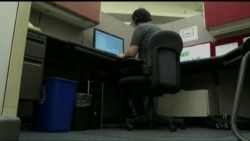A number of studies show that the more we sit, the higher our risk of developing dozens of chronic conditions, from cancer and diabetes to cardiovascular and liver diseases.
For older adults, every hour spent sitting is linked to a 50 percent greater risk of becoming disabled. But no one is spared. Too much sitting is bad for everyone.
Juame Padilla, an assistant professor of nutrition and exercise physiology at the University of Missouri School of Medicine, led a study aimed at evaluating the harm of too much sitting and coming up with a remedy.
"It's easy for all of us to be consumed by work and lose track of time, subjecting ourselves to prolonged periods of inactivity," Padilla said. "However, our study found that when you sit for six straight hours, or the majority of an eight-hour work day, blood flow to your legs is greatly reduced. We were surprised by the marked detrimental effects of just six hours of sitting on vascular function."
Eleven healthy young men participated in the study. The researchers compared their vascular function before and after a period of prolonged sitting. After sitting for six hours, the blood flow in an artery in the participants' lower legs was greatly reduced. The researchers then had the participants take a short walk, and found that 10 minutes of walking could restore the impaired vascular function and improve blood flow.
"When you have decreased blood flow, the friction of the flowing blood on the artery wall, called shear stress, is also reduced," Padilla said. "Moderate levels of shear stress are good for arterial health, whereas low levels of shear stress appear to be detrimental and reduce the ability of the artery to dilate. The more the artery can dilate and respond to stimuli, the healthier it is."
Padilla said that over time, too much sitting could lead to cardiovascular disease. In extreme cases, prolonged sitting can lead to deep vein thrombosis, a serious condition that can result in sudden death.
Deep vein thrombosis is caused by a blood clot in the legs that forms when leg movement is severely restricted, as it is when someone sits in a cramped seat on a long airline flight.
Padilla said the researchers also looked at ways to improve people's health at work, where many people sit for long periods of time. Standing desks and treadmill desks are becoming popular in the workplace. But Padilla says the real solution is surprisingly as simple as getting up and walking. "What we found is that 10 minutes of walking at the normal pace, which is equivalent to about 1,000 steps, was sufficient to reverse vascular dysfunction associated with sitting."
One company in Missouri instituted walk breaks and found that it not only helped employees, it also helped business. Diamond Scott, an employee, said the walk breaks improved employee morale. "It's a way for us to spend time together outside of the workplace, and when you're healthier, you're happier," she said.
Switching to standing desks, adjustable workstations or even treadmill desks can help. But Padilla found the key is to get up and walk.









